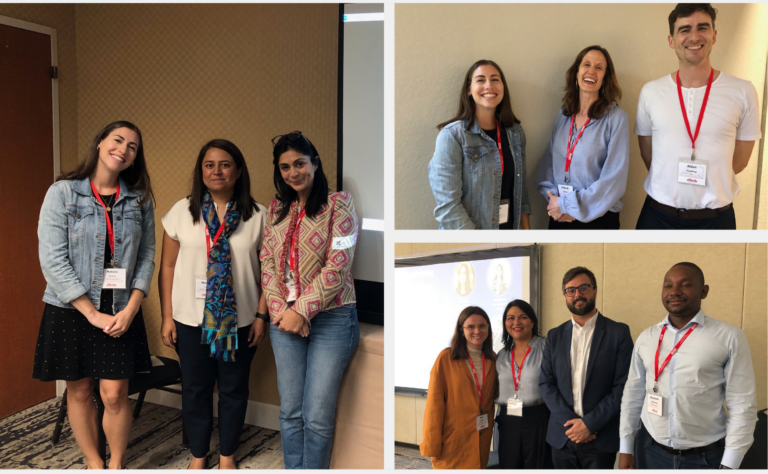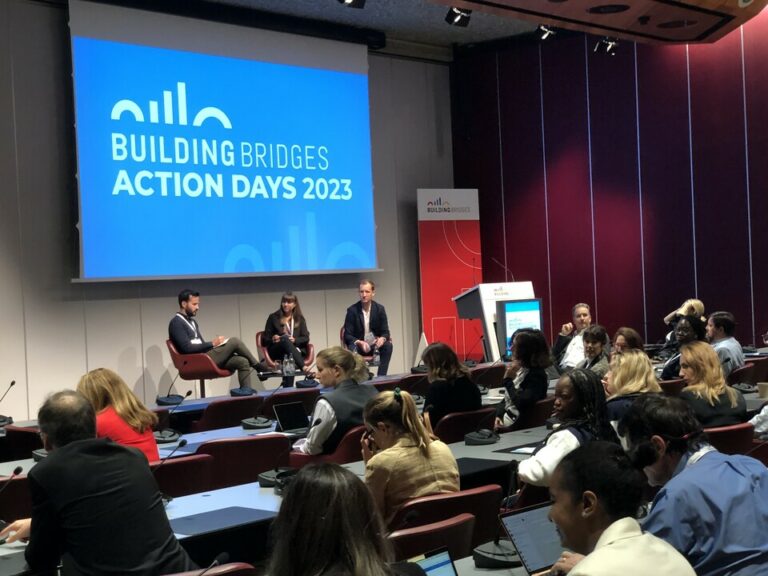Beyond the Check: Can Support-Focused Scholarships Close Equity Gaps in US Higher Education?

By: Sarah Deonarain
Despite the United States investing billions of dollars each year in college financial aid, including federal grants, loans, and private scholarships, college completion rates remain stubbornly unequal. Students from low-income families and underrepresented backgrounds are significantly less likely to graduate from college compared to their wealthier peers. According to the National Center for Education Statistics, just 16% of first-generation, low-income (FGLI) students earn a bachelor’s degree within six years, compared to 62% of their more advantaged counterparts. Meanwhile, in 2023-24, undergraduate and graduate students received a total of $256.7 billion in student aid in the form of grants, Federal Work-Study (FWS), federal loans, and federal tax benefits, yet persistent gaps by income, race, and background remain.
These disparities suggests that scholarship funding alone is not enough to level the playing field. Even with tuition covered or heavily subsidized, many students face academic under-preparation, work obligations, unstable housing, mental health challenges, and a lack of social capital on campus. For example, according to the National Student Clearinghouse Research Center, students are considered ‘persisted’ if they remain enrolled at any institution whether in the spring term following initial enrollment or in the fall of their second academic year, and among graduates from low-income high schools in 2021, the persistence rate from the first to second year of college increased by merely 3 percentage points from the previous year, demonstrating slow growth for low-income students.
Moreover, the Hope Center for Student Basic Needs at Temple University found in 2023-24 that nearly 75% of Black and Indigenous students reported facing at least one form of basic needs insecurity related to food and/or housing, compared to 55% of White students, a 20-percentage point gap. In another study by the American Psychological Association, Asian American college students were revealed to face elevated social anxiety, depression, and cultural pressures from the “model minority” myth, yet they were three times less likely than their White peers to seek mental health treatment, with overall lifetime psychiatric disorder rates around 17.3%. Hispanic and Latino/a students accounted for nearly 46% of all undocumented students in higher education, and the vast majority of Latino students, 94%, receive some form of financial aid, and 83% rely on two or more forms of aid to pay for college, one survey found.
Traditional aid models rarely address these intersecting barriers, leaving students to navigate complex systems largely on their own. At the same time, education institutions struggle with limited advising capacity, strained support services, and inconsistent coordination between academic and student life offices. The result is a cycle where financial access does not consistently translate into degree attainment, particularly for FGLI and minority students. While traditional financial aid such as large-scale student loans remains the primary pathway, innovative scholarship models in the US are pairing monetary support with intensive, ongoing mentorship and wraparound services. This prompts us to examine whether scholarship programs that intentionally integrate sustained mentorship, academic coaching, and basic needs assistance, otherwise referred to as support-driven models, can break that cycle, and how their impact can be measured. Can these support-focused scholarships close equity gaps in US higher education?
As a Program Associate at the Education Finance Network (EFN) and Milken Scholar, I approach this question not only as a professional inquiry but as a personal one. Deeply disturbed by the above data and drawing from my own experience as a college scholarship recipient, I attended the New Scholars Summit hosted by the Milken Scholarship Program (MSP) in Los Angeles, California to explore whether programs that pair financial support with wraparound services, such as mentorship, career guidance, and community building, can meaningfully close equity gaps in U.S. higher education.
EFN, which exists to explore innovative, sustainable ways to fund quality education and close equity gaps, has sought to deepen understanding of scalable financing and innovative models such as income share agreements (ISAs), blended finance, outcomes-based funding, and more, support-focused scholarship programs present another critical piece of the puzzle. Moreover, EFN has historically focused on K-12 education, so this presented an opportunity to break into higher education. Support-driven scholarships, though resource-intensive, address non-financial barriers to completion that financing alone cannot solve. Investigating their effectiveness matters not only to get students into higher education, but to ensure they graduate with the skills, networks, and resilience to succeed. By investigating how holistic support models can work alongside innovative finance, I hope to shape a more comprehensive vision of education financing that addresses both access and completion.
At the Summit, I gleaned several key insights, which I elaborate on below, drawing on reflections and direct quotes from current and alumni scholars. These perspectives helped me evaluate the role that support-driven scholarships can play in advancing higher education for the most marginalized students in the United States.
Redefining Success: Investing in People, Not Just Outcomes
One major insight from the Summit is a fundamental redefinition of what counts as “success.” Rather than evaluating students purely on academic or career outcomes, support-driven models acknowledge that setbacks are part of every journey, especially for FGLI students who navigate higher education in the US with limited safety nets. Instead of penalizing failures, these programs actively encourage students to remain engaged. As the Director of one such program said, “We want you to show up even and especially when you fall short of expectations or fail.”
This shift recognizes that investing in people requires patience, flexibility, and the belief that impact unfolds over lifetimes, not just at graduation. For many recipients, the long-term outcomes go beyond degrees and high salaries, extending into leadership roles in their communities, building families, and serving as mentors for future cohorts. As one alumnus of a similar scholarship program expressed, “Every time we gather for our Annual Scholars Summit, even if it’s been years, you go back to the first time [when you first received your scholarship]. Here, we emphasize supporting all kinds of communities across the cities we invest in.” In this sense, support-driven scholarships measure success by a broader, more equitable standard.
Across all panels, the message was consistent: equity requires deliberate design, not just in technology, but in financing, delivery, and everyday decision-making.
Holistic Support Builds True Community
Another key takeaway is the transformative power of wraparound support services, such as mental health resources, mentorship, professional development, and peer connection, especially for students from marginalized backgrounds. At one session during the Summit, titled “Setting Up for Success: Mental Health & Wellness Care in College & Beyond” with Dr. Mabel Bongmba, an adult psychiatrist, and Erin Raftery Ryan, CEO of the National Alliance on Mental Illness (NAMI), scholars expressed that meal reimbursements, alumni networking, conference funding, and even “family-like” gatherings, as one administrator called it, have provided not only tangible resources but a critical sense of belonging. In addition to providing immediate resources, these networks offer role models and peers whose experiences and achievements demonstrate what is possible, reinforcing students’ confidence and ambition. Exposure to such examples has been shown to positively influence educational persistence, career aspirations, and long-term economic mobility, all critical outcomes for students who may not otherwise see pathways to success reflected in their immediate environments.
Such holistic support creates pathways for students to explore unconventional interests, learn from other lived experiences, and pursue opportunities like funded travel and research that are rarely accessible in traditional, “check-only” scholarship models. In the context of US higher education, where many highly talented FGLI students face isolation, stress, and lack of guidance, this support-driven approach can fill gaps left by campus resources and build long-lasting, supportive networks. As one alumnus put it, “We have Scholars that come to everything no matter what. Even when they have kids, they come back!”
Lack of Awareness: The Siloed Landscape of Scholarship Innovation in the US
Despite the existence of innovative finance mechanisms for education, both students and foundation leaders remain largely unaware of alternative sources of funding beyond conventional paths, as some current and alumni Scholars at the Summit expressed as well as program staff. The US higher education system is notably siloed; students often learn about scholarships late in their academic journeys, while many organizations are unfamiliar with alternative financing models that are increasingly being leveraged globally. This lack of awareness, possibly coupled with structural barriers to accessing loans or other sources of funding, reinforces the struggles faced by the most vulnerable groups, leaving millions without access to quality, affordable higher education. As a result, models that combine financial and social support still operate at the margins, rather than setting new norms for educational equity.
Depth Over Breadth: Can Intensive Support Scale?
A persistent challenge for support-driven scholarships is scale. Intensive mentorship, regular check-ins, and individualized grants are inherently resource-intensive; in many cases, such programs serve hundreds, not thousands, of students over decades. For example, one prominent support-driven program founded in 1989 has supported just over 600 scholars to date. While alumni have created their own support funds to extend the impact, the core model remains relatively small in reach but deep in engagement. This raises critical questions for policymakers and funders: Does “more support per student” mean “fewer students helped,” and are the results worth the concentrated investment? With limited philanthropic resources, determining the “return on investment” for such boutique models remains an open and urgent question.
Evidence for Effectiveness of Support-Focused Scholarship Programs
Research consistently shows that wraparound support can significantly improve persistence and completion rates for underrepresented, FGLI students. For example, the City University of New York’s Accelerated Study in Associate Programs (ASAP) increased three-year graduation rates from 22% to 40% among low-income students by combining financial aid with intensive advising, career services, and transportation assistance. Similarly, a randomized evaluation of the Dell Scholars Program found that participants were 25% more likely to earn a bachelor’s degree within six years than comparable peers, with mentorship and support services cited as key drivers. These results align with broader literature on student success, which highlights that non-academic factors such as social belonging, access to mentors, and timely crisis support can be as influential as financial aid in determining degree completion.
Complementarity with Innovative Finance Models
Support-focused scholarships and innovative finance models are often framed as competing approaches, but they address different aspects of the higher education challenge. For example, income-share agreements (ISAs), a type of innovative model, can address the problem of financing upfront costs in a sustainable way, shifting repayment to a percentage of future income and reducing reliance on debt. Support-driven programs, by contrast, tackle the “hidden curriculum” of higher education: the social, psychological, and navigational barriers that disproportionately affect FGLI students. Rather than being mutually exclusive, these approaches can complement each other: a student receiving aid or funding may still need mentorship, mental health support, and career guidance to graduate and secure stable employment, while a support-driven program can benefit from financing mechanisms to expand its reach without relying entirely on philanthropy.
Looking across the US higher education landscape, support-driven scholarship models offer a distinct yet complementary approach compared to traditional large-scale loans, conventional “check-only” scholarships and emerging financing alternatives. Programs that invest deeply in students, through mentorship, alumni networks, professional development, and crisis support, stand out for their emphasis on long-term, holistic growth. Elements such as regular cohort gatherings, emergency or travel and research grants, alumni mentorship and funds, and tailored career support differentiate these models from “one-time” aid. Yet, the small scale of such initiatives, combined with high costs and funding vulnerability, limits their broader reach, demonstrating the need for joint approaches.
For policymakers, colleges, and philanthropies, the core lesson is that true equity in higher education requires more than financial aid alone. Support-driven models have demonstrated that community, mentorship, and wraparound services can yield powerful results for the most vulnerable students but also raise tough questions about scalability and sustainability. Going forward, the challenge will be to blend the best of both worlds: leveraging support-driven models where they are most impactful, while exploring ways to integrate their lessons into broader, more accessible and sustainable financing systems.
The Summit gave me the impression that the future of college access in the U.S. may well depend on finding the right balance, one that not only opens doors, but also ensures that historically marginalized students have the resources, networks, and support to thrive, because closing equity gaps in higher education, as I heard repeatedly from Scholars, requires more than opportunity; it requires sustained investment in people.
Sarah Deonarain is a Program Associate with the Education Finance Network. All views presented are her own.





